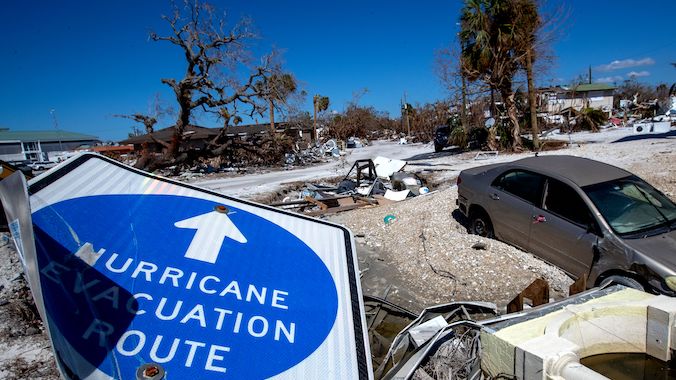Every Hurricane Season is ‘Above-Normal’ If One Hits You
Photo by CRISTOBAL HERRERA-ULASHKEVICH/EPA-EFE/Shutterstock
The National Oceanic and Atmospheric Administration has issued its annual Atlantic hurricane season projection, warning that the bonkers-level ocean heat will likely help produce an “above-normal” season with 17 to 25 named storms, eight to 13 that make it to hurricane status, and four to seven that manage “major” hurricane status of category 3 or higher.
They peg the likelihood of the above average season at 85 percent. Hurricanes, though, are sort of an either-or proposition: we could get those 25 named storms and all of them just happen to swing out to sea, or five of them could hit major population centers on the Gulf Coast. In both cases the predictions were right.
NOAA’s guess joins a host of others that have also looked at the warm ocean waters, the approaching La Niña and its propensity to prime tropical storms, the reduced trade winds and wind shear, and seen a banger of a hurricane season ahead of us — Colorado State’s team, the U.K. Met Office, the Weather Company/Atmospheric G2.
The semi-random nature of a season’s collection of storm tracks can make it hard to see the climate change signals inherent to them, but the warmer waters really are fueling the potential for extremely dangerous rapid intensification, not to mention the fact that sea levels inching up every year just change the baseline from which storm surge and flooding begin.
The danger of hurricanes is often somewhat askew from the cliches; inland flooding sometimes many miles from shore is often responsible for as much or more death and destruction as the waves on shore, and experts have been pondering for years whether the category system’s focus on wind speed obscures the more important impact of rainfall and surge. Climate change has even spurred NOAA to ponder moving the official start of hurricane season to May 15 from June 1, given the increasing propensity for the tropics to spin up a May storm or two.
It’s hard to imagine that someone living at sea level in coastal Louisiana isn’t already acutely aware of the issue, though the seasonal projections are useful if they make even a few people in vulnerable places check their hurricane plans. This year more than a few might have to use them.